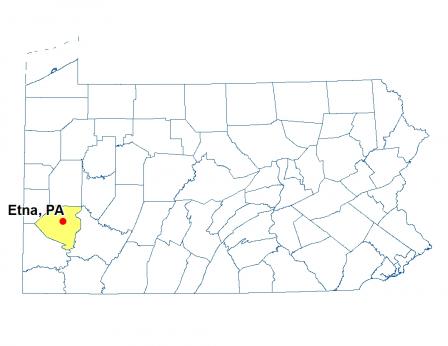Stories of Progress in Achieving Healthy Waters
U.S. EPA Region 3 Water Protection Division
Etna, Pennsylvania • November 12, 2015
With EPA assistance, a small community near Pittsburgh is turning its main street into a green street to control stormwater runoff that has caused flooding, sewer backups and combined sewer overflows.
The Borough of Etna Exit – where flooding was so bad the borough manager used to say she was from “Wetna” – is applying EPA Clean Water Act Section 319 funds to transform its downtown into a green streetscape to capture more than 500,000 gallons of stormwater per block each year.
EPA has provided design and construction funding through the Pennsylvania Department of Environmental Protection’s 319 Nonpoint Source Grants program for the first two blocks, or phases, of the planned six-block project in the Butler Street central business district.
EPA joined Etna and state officials last year to cut the ribbon for the first block of the project which is using a variety of green techniques to intercept runoff from rooftops and paved surfaces. And just recently, Etna was informed it is receiving more than $550,000 for Phase 2.
Borough Manager Mary Ellen Ramage said flooding has been a major issue for Etna – from big events like Hurricane Ivan in 2004 when a quarter of the population was flooded and water rose as high as seven feet inside the municipal building – to more frequent, less severe storms. Etna is the most downstream community in the 67 square-mile Pine Creek watershed.
Ramage said Etna placed its trust in green infrastructure as the answer to stormwater woes. “I’m so proud of our business people and the community,” she said. “We took the leap of faith and it’s worked out so well.”
The project is designed to remove stormwater from the combined sewer system, reduce runoff and improve the aesthetic appeal of the downtown area. The reconstructed blocks are part of the borough’s Green Master Plan and the Pine Creek Watershed Implementation Plan. The flow reduction actions allow the ALCOSAN Exit system to manage, pump and treat less wastewater and decrease the chances of sewer overflows into Pine Creek and the Allegheny River.
A distinctive aspect of Phase 2 will be the conversion of a vacant lot into a “rain park” that will include trees, benches and water terraces and will process stormwater from downspouts disconnected from storefronts. The second phase will also involve street trees, underground storage, decorative grates, pervious pavers and other green features. Ramage said the streetscape project is serving as an educational tool for residents and businesses interested in learning more about green infrastructure and its benefits.

-
Turning Main Street into a Green Street (PDF)(1 pg, 610 K,
11/12/2015)
With EPA assistance, a small community near Pittsburgh is turning its main street into a green street to control stormwater runoff that has caused flooding, sewer backups and combined sewer overflows.
